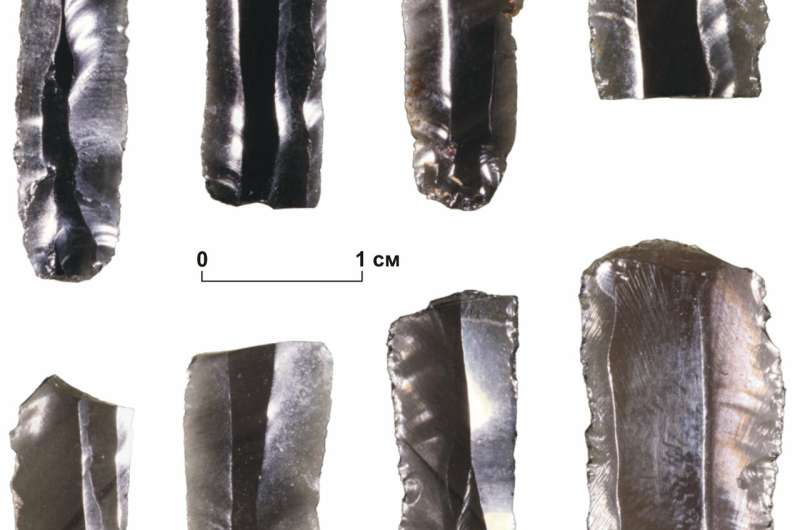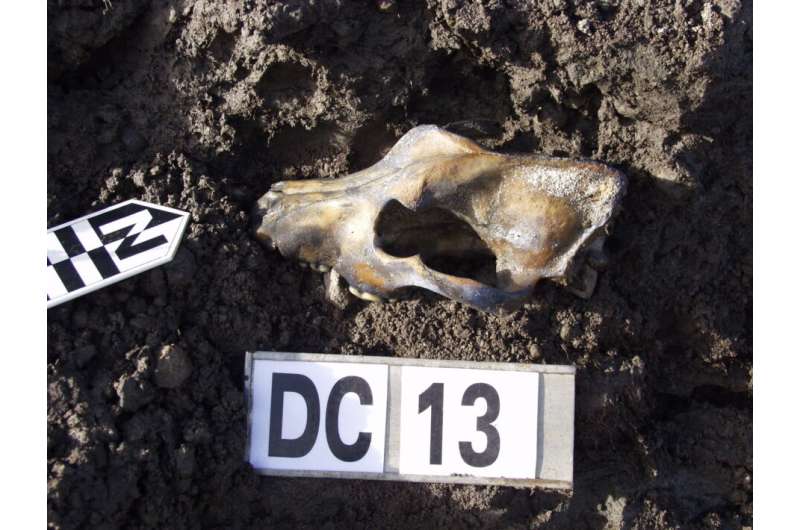Ancient people in the high-latitude Arctic had well-developed trade

Russian scientists have studied the Zhokhov site of an ancient population, which is located in the high-latitude Arctic. They have described in detail the way of life of the ancient people who lived there. Despite the area's sparse population, the ancient people communicated with representatives of other territories and even exchanged goods with them through trade fairs.
The Arctic is the coldest and least hospitable region on Earth. The Arctic is mostly unpopulated by humans, although in some countries, including Russia, the United States and Norway, there are now industrial zones. These zones increase the average population density to 0.35 people / km2 but basically it does not exceed 0.03-0.04 people / km2.
Zhokhov Island, located at 76º N in the New Siberian Islands, 440 kilometers north of the modern coast of the East Siberian Sea, belongs to the High Arctic. Researchers discovered the remains of an ancient people here, the Zhokhov site, considered the earliest evidence for human habitation in the High Arctic. Researchers believe 25 to 50 people permanently resided in the area around 9300 to 8600 years ago. In the remote past, Zhokhov island was a part of the vast plain formed due to drastic sea level drop during the last glacial maximum. Because of the post-glacial sea-level rise, this plain was flooded and eroded. At present, the Zhokhov site is located in the southwestern part of the modern Zhokhov island, near the foot of a 120 meter hill, which shields it from the severe northwest wind. This place was very convenient for the ancient people. The hill served as an observation point, and because of the proximity to the coast, they always had a supply of driftwood carried in by the tide.
The scientists conducted excavations in permafrost and have already investigated a significant part of the monument—about 571 square meters. Many tools were found made of stone, bones, horns, tusks and wood. These are hunting weapons, parts of sleds and home utensils. Among the lithic artifacts, there are many microprismatic blades, which were used as side-blades for composite tools that served as spears, darts, arrow points and knives. Most of them were produced of silicious rocks of local origin, while some of them were made of exotic raw materials unusual for this part of the world, including obsidian and volcanic glass. The researchers found 79 such items. The ancient people appreciated this material for its splitting ability and valued its extremely thin and sharp cutting edges. This material has high research value because each deposit of obsidian carries its own unique geochemical signature, which can identify the source of the material. Thus, researchers can learn more about contacts with people from other regions.
There is no obsidian source nearby Zhokhov Island. The closest area with such a source is located near Krasnoye lake in the lower reaches of the Anadyr River in Chukotka, which is some 1,500 km in a straight line, a travel distance of more than 2,000 km. It would seem that the ancient people could not travel such a distance physically. The authors studied the unearthed obsidian objects via X-ray fluorescence, a nondestructive method that reveals the geochemical properties of samples and thus provides a method to locate the source of the material.

"We found that this particular obsidian type was coming to Zhokhov Island from the area of the Krasnoye Lake. This is a super-long distance to travel, and it is hard to imagine that the ancient people could possibly make such trips some 9000 years ago. Most likely, they met other people at intermediate points and exchanged products made of obsidian, or enjoyed primitive trade," said one of the authors of the article, Vladimir Pitulko, RSF project's principal investigator, Ph.D. in history, senior researcher at the Paleolithic Department of the Institute for the History of Material Culture, Russian Science Foundation.
The researchers also analyzed more than 54,000 faunal remains from hunting and reconstructed the yearly economic cycle of the inhabitants of the Zhokhov site. The occupants of the site were classic terrestrial hunters who practiced reindeer hunting. However, in the winter, they hunted polar bears sleeping in lairs. This provided a reliable and stable food supply, because there were quite a lot of the bear dens in this area.
Previously, scientists investigated the bones of medium-sized canids; they indicate the presence of a well-formed dog that lived together with the people of Zhokhov site. In addition, these animals are similar in size and body weight to modern sled dogs. Findings of parts of sleds including runners prove that the inhabitants of these territories had a well-developed transport system. Thanks to that system, the inhabitants of Zhokhov site likely traveled to the nearby territories, which were still part of the mainland at that time, and maintained relations with distant people.
Vladimir Pitulko also noted that sites in the mouths of Kolyma and Indigirka rivers could serve as the intermediate points in that trade. In this case, the distance between the exchange points was about 700 km, which is quite possible to travel in early spring using sled dogs.
Such meetings turned into fairs later on as the inhabitants of the north of Eastern Siberia organized them in the 18th and 19th centuries, but not only for the exchange of goods. The exchange of information was considered to be of much more importance. In any case, the material evidence on Zhokhov island is presented with a minimum of findings. Probably an important result of such meetings was marriage contacts necessary to secure biological stability of small groups of people who lead an isolated life.
"The results of our research indicate a high level of sociocultural relations that existed among the ancient population of the Arctic in Eastern Siberia 9000 years ago, and about the engagement of people from the Zhokhov site. These people who lived on the edge of the Earth were not isolated. On the contrary, contacts within these societies were much more developed than it used to be thought," concluded Vladimir Pitulko.
More information: Vladimir V. Pitulko et al, 'They came from the ends of the earth': long-distance exchange of obsidian in the High Arctic during the Early Holocene, Antiquity (2019). DOI: 10.15184/aqy.2019.2
Journal information: Antiquity
Provided by AKSON Russian Science Communication Association





















